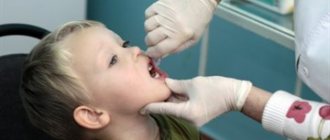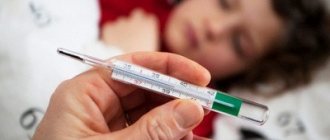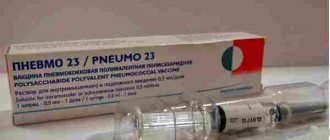Full text of the article:
The Russian calendar of recommended vaccinations includes vaccination against
polio.
There are various drugs that could be used for vaccination. Doctors could vaccinate children using inactivated, “live”
or
combined vaccines
. Nowadays, live vaccines are mainly used for vaccination, but what caused such changes?
Why is polio dangerous?
Poliomyelitis is also called “ infantile spinal paralysis.”
”, since polio mainly affects children under 6 years of age.
Polio is highly contagious. The disease is provoked by a polyvirus
, which can be transmitted both by
airborne droplets
and
by household contact
. You can become infected with polio through contact with a sick person or through contaminated food, water and objects.
Polyvirus can be very tenacious. If there is no suitable “carrier” nearby, the virus easily adapts to the environment and can remain active for six months
, it is not afraid of drying or freezing, so it can live in almost any climate.
A person who has become infected with polio can survive the disease without visible symptoms, but throughout this time he will be dangerous to others. Regardless of the presence of symptoms, a sick person is a carrier and distributor of the infection. The main danger of polio is that it affects the membrane of the spinal cord
, and with it
motor nerve cells
, which leads to their death. Poliomyelitis can cause paralysis of certain muscle groups and lead to their atrophy, as a result of which a person becomes disabled.
Fighting polio
Outbreaks of polio periodically occur in different parts of the world. An active fight against the disease took place in the middle of the last century in Europe and North America, and then an effective vaccine against the virus was created. In the USSR, children were actively vaccinated against polio, so by 1961 the disease was defeated
.
For almost half a century, doctors in the Soviet Union and then in Russia did not encounter new cases of the disease, but in 2010, an outbreak of polio was recorded in Tajikistan
.
Then about 700 people became infected with the virus, and 26 of them died. Quite quickly, the virus penetrated into Russia, and it turned out to be a “ wild strain
” of the virus, which had previously been found only in India, Pakistan and Afghanistan. It was decided to reconsider the approach to vaccination.
Once again about polio, or What is worse: the vaccine or the disease?
06.02.2019
According to WHO, Russia, like most other countries in the world (with the exception of Pakistan, Afghanistan and Nigeria) are currently polio-free zones. So, it means that you can, with a calm heart, forget about the terrible threat and no longer vaccinate children against this disease? Let's figure it out.
Our expert is an employee of the Russian National Research Medical University named after. N.I. Pirogov and the Clinical Department of Acute Neuroinfections of the Federal Scientific Research Institute of Regional Infectious Diseases named after. M.P. Chumakov RAS, WHO expert on polio in the Russian Federation Armen Shakaryan.
Until the middle of the last century, polio - a viral disease that leads to irreversible damage to the nervous system, paralysis and even death - was widespread. By the way, it was this illness that put US President F. Roosevelt in a wheelchair for the rest of his life.
Is the free zone free?
Since WHO launched the Global Polio Eradication Initiative (GPEI), the world has made unprecedented progress. The incidence rate has decreased tens of thousands of times! If back in 1988, 300–400 thousand people a year in 125 countries suffered from polio, then by 2021 their number had dropped to 22 people in only 3 countries. In our country, the last large-scale epidemic of the disease broke out in the middle of the 20th century. And the last outbreak was recorded in 1996 in Chechnya. But since then, thanks to large-scale vaccination, the terrible threat has almost been forgotten. Since 2002, the circulation of polioviruses has been completely stopped in Russia, and accordingly, there have not been a single sick person!
Polio has made a comeback in the recent past: in 2010, a wild virus was discovered in Tajikistan, causing the largest outbreak of the 21st century. In 2013, the “wild” polio virus became active in a number of countries that were previously considered free from these infections - Egypt, Israel, Kenya, Somalia. In this situation, all of us (not only travelers, but also homebodies) are at risk of encountering vectors of infection. After all, if there is at least one person in the world with polio, there is a potential risk for everyone.
Consequences last a lifetime
Adults also suffer from this terrible infection, but since infection occurs through the fecal-oral mechanism (in other words, through dirty hands into the mouth), the main risk group is children under 5 years of age, whose hygiene skills have not yet been developed.
To get this intestinal virus, a child simply needs to pick up an infected toy and then put his hands in his mouth. By the way, the risk of infection increases when the adenoids are removed - this makes the penetration of any infection more likely. You can catch poliovirus both in kindergarten and in any public place: on a playground, in an entertainment center and anywhere. It is not necessary to have contact with a sick person - you can also become infected from a carrier of a dangerous virus, of whom there are 100-1000 more than sick people.
Yes, once infected, not everyone will get sick. Most children after such contact will develop only signs of an intestinal infection, but some may experience paralysis, including the respiratory system, leading to death. Unfortunately, it is impossible to recognize an infection at an early stage, before irreversible consequences have yet occurred. And there is no specific treatment yet. The infectious process can be somewhat weakened by minimizing its negative impact as much as possible. But the prognosis largely depends on the properties of the specific poliovirus and the patient’s immunity. With early treatment and proper rehabilitation, significant results can be achieved. However, the consequences of polio remain with the patient for life, leading to disability. And the only reliable protection is provided by vaccination.
Alive or dead?
According to the National Calendar, children in Russia are vaccinated against poliovirus infection 6 times. This scheme allows more than 95% of vaccinated people to develop immunity for at least 15 years. However, if vaccination is incomplete or the vaccination schedule is violated, immunity may not develop adequately, and then the child may also get sick. However, being vaccinated against polio at least once is still better than not having any vaccination at all.
In Russia, two types of vaccines are used - live and inactivated (killed). Inactivated polio vaccine in injectable form is available both as a separate drug and in combination with other vaccines (whooping cough, diphtheria, tetanus and other infections). This is convenient, since several vaccinations can be done at once.
Live oral polio vaccine (in the form of oral drops for children) also provides high immunity, but is fraught with complications if used incorrectly. 1 out of 2 million vaccinated children may develop vaccine-associated polio. To minimize this risk, Russia uses a special vaccination scheme, which stipulates that an inactivated vaccine is administered the first two times, and only the third vaccination is given with a “live” drug. In addition, children from risk groups - from closed children's groups - are vaccinated only with an inactivated vaccine to completely eliminate complications. Some European countries also use live polio vaccines. But in the countries of the Western Hemisphere, since the end of the 20th century, vaccinations have been carried out only with inactivated drugs. Today, a domestically produced inactivated polio vaccine is undergoing clinical trials, and when it is approved for use, the use of live vaccines will likely become a thing of the past.
One for all and all for one
It is necessary to vaccinate against polio for both adults and children not only for the sake of protection against the disease itself - the risk of encountering the virus is really not very high - but mainly in order to prevent the dangerous infection from going on the offensive again and leading to new ones. epidemics. This is a matter of common, collective responsibility. It is believed that the infection can be contained only if at least 90-95% of the population is vaccinated. But as parents today increasingly refuse vaccination, the situation threatens to get out of control. And then danger will hang over everyone. After all, the polio virus is relatively safe as long as there are few carriers of the infection around. But when the concentration of the virus is high and as a result of a significant increase in the number of infected people, even fully vaccinated people can become infected. Fortunately, such situations are still difficult to imagine. However, with a decrease in the number of vaccinated people, this threat may become very real.
Other news
Epidemiologist Nikolai Briko: the situation with coronavirus in Russia is quite difficult
The coronavirus pandemic has forced doctors and scientists to reassess the situation with infectious diseases in Russia. In particular, in recent years, the country has seen an increase in the incidence of meningococcal infection, which indicates the importance of implementing measures to prevent it. Academician of the Russian Academy of Sciences, Doctor of Medical Sciences, Professor Nikolai Briko spoke about which categories of citizens are most susceptible to meningococcal infection, the consequences of its combination with COVID-19, as well as the overall situation with coronavirus in the country.
Rospotrebnadzor warned about the danger of “chickenpox parties”
Some people believe that it is better to have chickenpox in childhood, because a child supposedly tolerates this disease more easily than an adult. Therefore, there are still parents who try to “plan” for the disease: they go to visit sick friends and organize “chickenpox parties,” Alexander Gorelov, deputy director for scientific work at the Central Research Institute of Epidemiology of Rospotrebnadzor, noted in an interview with Sputnik radio.
In the Nizhny Novgorod region, 1.5 million people were vaccinated against influenza
In the Nizhny Novgorod region, flu vaccination is being completed, the press service of the regional government reported. The vaccination campaign covered less than half of the region’s population—1.5 million people, including 388 thousand children and adolescents.
In Bashkiria they talked about the benefits of vaccination against pneumococcus
Does the pneumococcal vaccination make it easier to cope with coronavirus in case of complications? Important information was presented at a briefing on the results of the activities of the healthcare sector in Bashkiria in 2021. As Industry Minister Maxim Zabelin said, indeed, vaccination against pneumococcus reduces the incidence of complications from Covid and the development of bacterial pneumonia.
Rostec began supplying Russian flu vaccines abroad
In 2021, FORT exported vaccines to the Republic of Belarus, Moldova, Kyrgyzstan, Turkmenistan and Uzbekistan. In the overall structure of supplies, the largest volume (over 90%) fell on the quadrivalent vaccine Ultrix Quadri. In addition, foreign partners purchased the trivalent Ultrix vaccine.
Nacimbio launched an application about vaccinations
, which is managed by the Nacimbio holding of the Rostec State Corporation, launched the “Vaccinations - Personal Calendar” mobile application. It helps users create an individual vaccination schedule and reminds them about scheduled vaccinations. The Vaccinations app is available for free on Android and iOS mobile phones.
Covid-19 vaccines will be included in the preventive vaccination calendar
Prime Minister Mikhail Mishustin instructed to include vaccines against the new coronavirus infection in the calendar of preventive vaccinations for epidemic indications, taking into account priority. Previously, COVID-19 vaccines were included in the VED. Mishustin noted that changes to the order of the Ministry of Health “On approval of the National Calendar of Preventive Vaccinations and the Calendar of Preventive Vaccinations for Epidemic Indications” must be made before December 17, 2020.
Vaccination against coronavirus has begun in Crimea
“Vaccination begins today in Crimea. First of all, high-risk medical workers who work with patients with a new coronavirus infection will be vaccinated. In the future, the daily number of vaccinated people will depend on the volume of vaccine received,” wrote the head of the republic, Sergei Aksenov, on his page on the VKontakte social network.
Cases of dangerous measles continue to be recorded in the Volgograd region
In the Volgograd region in 2021, measles was laboratory confirmed. This was reported by the regional department of Rospotrebnadzor. It is known that a dangerous disease manifests itself in those who have not been vaccinated. This year, 1 case of measles was confirmed in the region.
Scientists will combine the Oxford vaccine with Sputnik V
Scientists from the University of Oxford and the Russian Gamaleya Research Center for Epidemiology and Epidemiology will join forces to work on a vaccine for COVID-19. They agreed to conduct clinical trials of a combination of two drugs - the British vaccine and one of the two components of the Russian Sputnik V, the Russian Direct Investment Fund and the Swedish-British pharmaceutical company AstraZeneca reported.
What vaccination is given against polio?
Parents often ask at what age is the polio vaccine given? A doctor can answer this question, since much depends on the vaccination plan and what drug is used for vaccination. Until 2010, not a single case of polio was recorded in Russia, so children were vaccinated using an inactivated vaccine
, which did not contain live viruses.
Injections of the drug were given to the child in the first two years of life
, and then revaccination was carried out
at the age of 14
. Unfortunately, inactivated, i.e. The “dead” vaccine is not capable of providing a child with protection against the “wild strain” of polio, so they decided to replace the inactivated vaccine with a “live” one.
The “live” vaccine contains live but weakened viruses.
, it is believed that a live vaccine helps the body develop the necessary immune response to the “wild strain” of the polyvirus.
However, a live vaccine is not used throughout the entire vaccination course; the first two vaccinations for babies are still given using an inactivated vaccine
.
SPECIAL INSTRUCTIONS AND PRECAUTIONS
- Intravenous administration of the POLIMILEX vaccine is strictly prohibited;
- Adolescents and adults may faint after vaccination. It usually occurs immediately after vaccination and may be accompanied by nausea and vomiting. If fainting occurred after a previous vaccination, or there are signs of it before or during the administration of the vaccine, then vaccination should be carried out with the patient sitting or lying down;
- Considering the possibility of developing immediate allergic reactions, vaccination sites should be provided with anti-shock therapy;
- Persons infected with the human immunodeficiency virus (HIV), with symptomatic and asymptomatic stages, must be immunized with the POLIMILEX vaccine in accordance with the National Preventive Vaccination Calendar;
- It may not be possible to obtain the expected immune response in patients with congenital or acquired immune disorders;
- The potential risk of developing apnea and the need to monitor breathing for 48-72 hours should be considered when conducting the primary course of immunization in premature infants born at 28 weeks or earlier, especially those with a history of signs of an immature respiratory system. Because the benefits of immunization for this group of children are high, vaccination should not be delayed or considered contraindicated.
Use during pregnancy and breastfeeding
Vaccination data from a large number of pregnant women do not show any adverse effects of the polio vaccine on pregnancy or fetal (newborn) health. However, polio vaccine should only be used during pregnancy if there is a clear risk of infection.
The polio vaccine can be used during breastfeeding.
Should we be afraid of the “live” vaccine?
Some parents are afraid to vaccinate their child with a live vaccine because they believe that it can provoke the development of a real disease
, however, the fears are unfounded.
In some cases, complications may indeed occur after administration of the vaccine, but these are usually local allergic reactions that have nothing to do with polio. In addition, the first two vaccinations for a child are given using an inactivated vaccine
, this allows one to develop immunity from the strains of the virus that are in the live vaccine and avoid complications. After the first two vaccinations, the live vaccine can be used without risk.
This vaccination scheme is not new or experimental; it has been successfully used in different countries for many years. WHO also noted its effectiveness. However, in some cases, doctors still refuse to use a live vaccine. This happens when we are talking about babies with HIV infection or children who were born to HIV-infected parents. Also, children with primary immunodeficiency are not vaccinated with a live vaccine.
CONTRAINDICATIONS
- Severe reaction to previous administration of the POLIMILEX vaccine;
- Known hypersensitivity to one or more components of the vaccine;
- A disease accompanied by fever, an acute infectious or chronic disease in the acute stage. Vaccination is carried out 2-4 weeks after recovery or during the period of convalescence or remission. For mild ARVI, acute intestinal diseases, etc., vaccinations are carried out immediately after the temperature has normalized.
- Severe reaction (temperature above 40C, swelling and hyperemia at the injection site more than 8 cm in diameter) or a complication of the previous administration of the drug.
How can you tell which polio vaccine your doctor is using?
The pediatrician gives parents information about which vaccine will be used for vaccination and why. He also answers all questions about the vaccine and the drug, talks about possible reactions of the body and the recommended vaccination schedule. But you can distinguish an inactivated vaccine from a live one without the help of a doctor; you just need to look at where the polio vaccine is being given.
The inactivated vaccine is administered to the child using a syringe.
, and
live ones are dripped into the mouth
. The first vaccinations must be given to a child under 6 months of age, then the vaccine can be replaced with a live one. It is important that all vaccinations are done on time, then there will be no fear of the live vaccine, and even the disease itself.
Complications after vaccinations. Complications in children after vaccinations
Any vaccine is unsafe, but it should be noted that vaccinations themselves rarely cause complications. Adverse reactions to vaccinations are relatively common; they are divided into local and general; these are undesirable reactions of the body to the administered vaccine. Local reactions include redness, soreness and induration at the injection site, and general reactions include fever and general malaise. In general, adverse reactions are not considered a pathology; they are a normal response of the body to the introduction of a foreign antigen, and in most cases they reflect the process of developing immunity.
Adverse reactions should be distinguished from complications after vaccinations. Post-vaccination complications are extremely rare; they are a severe reaction of the body to the vaccine. Complications most often occur against the background of a weakened immune system or in cases where the rules and instructions for vaccination were violated, for example, the technique of administering the vaccine, violation of its storage conditions, or administration of the vaccine despite the presence of contraindications.
Complications after hepatitis vaccination
Vaccines against hepatitis B are recognized as one of the safest. But in the descriptions of the drugs there are references to complications that occur rarely or extremely rarely: increased body temperature (above 38.8 ° C), general reactions (malaise, fatigue, headache, nausea, vomiting, dizziness, myalgia, arthritis), skin rash and transient increase in transaminase activity, cases of polyneuropathy, optic neuritis, facial paralysis, exacerbation of multiple sclerosis, Guillain-Barre syndrome.
Complications after DTP vaccination
DTP is a combination vaccine against whooping cough, diphtheria and tetanus. This vaccine is considered the most dangerous. It has a very high risk of complications and increased allergenicity.
The most reactogenic component of the DPT vaccine is considered to be inactivated pertussis bacillus, since its antigens tend to infect brain tissue both directly and through an immune response. This happens because these same antigens have some similarities with meningeal antigens.
The ADSM vaccine, ADS(M) is essentially the same vaccine, but it does not contain pertussis. Therefore, as a rule, it does not cause adverse reactions.
In addition to the active ingredients, DTP (or other vaccines against whooping cough, diphtheria and tetanus) may contain preservatives and other additional substances, such as merthiolate, aluminum hydroxide, formaldehyde or mercury-based preservatives, which pose a danger to the child’s weakened body. It is these substances that usually cause a local reaction : redness, thickening or soreness at the injection site.
General reactions to DTP vaccination include an increase in body temperature to 38⁰С-39⁰С.
Severe reactions to DPT : a child's prolonged, piercing crying (constant persistent crying) - unusual (even squealing) crying of a child, usually continuously lasting up to 3 or more hours, temperature above 40⁰C, vomiting, convulsions, post-vaccination encephalitis.
Complications : there are no official statistics on complications after the administration of the DTP vaccine, but in publicly available sources you can find information about severe damage to the central nervous system (encephalitis, epilepsy, paralysis, hydrocephalus, autism, developmental delay), the immune system (severe allergic reactions) and other organs ( pyelonephritis, leukemia).
All reactions occur more often after repeated injections of the vaccine.
Complications after polio vaccination
Two drugs are used for vaccination against polio: oral live polio vaccine (OPV), which contains weakened live polio viruses and is dropped into the mouth, and inactivated polio vaccine (IPV), which contains killed polio viruses and is administered by injection subcutaneously or intramuscularly.
The only serious but extremely rare complication after OPV is vaccine-associated polio. Basically, this complication occurs against the background of immunodeficiency or congenital malformations of the gastrointestinal tract.
Vaccine reactions are rare after IPV administration. Most often they are expressed in a short-term increase in body temperature and a skin reaction at the injection site.
Complications after vaccination against measles, mumps and rubella (MMR, MMR)
After MMR vaccination, mild to moderate general and local reactions are possible. Severe reactions and complications are observed very rarely, these include: pneumonia, panencephalitis, one-sided deafness, thrombocytopenia (single cases have been reported).
In some cases, vaccine-associated diseases (measles, mumps) occur due to the use of live vaccines.
Complications after BCG vaccination (tuberculosis)
Post-vaccination complications after vaccination against tuberculosis can be divided into 4 groups:
- Local reactions: cold abscess, ulcer, regional lymphadenitis, keloid scar.
- Osteitis, clinically occurring as bone tuberculosis, lymphadenitis of two or more localizations, isolated complications in the form of allergic vasculitis, lupus erythematosus.
- Generalized BCG infection occurs extremely rarely, in isolated cases. Mostly occurs in children with T-cell immunodeficiency.
- Post-BCG syndrome – manifestations of an allergic disease: anaphylactic shock, erythema nodosum, rashes, secondary infection.










